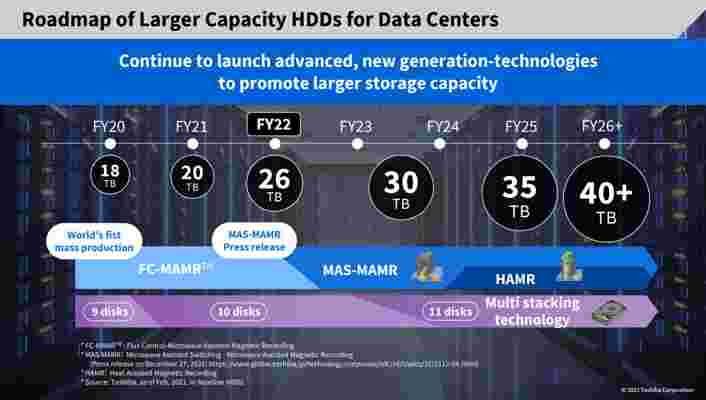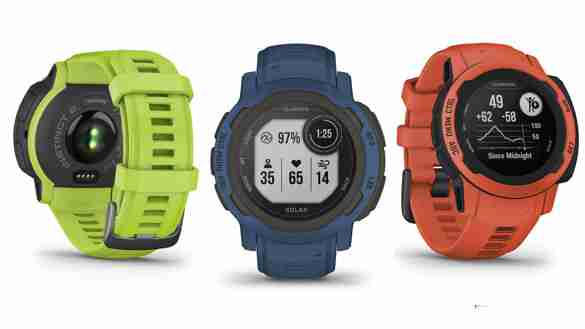Samsung Galaxy S22 Ultra is not ready to be my TikTok creation platform.
That’s right, I TikTok. Don’t look at me like that. There are lots of middle-aged people lip-synching, dancing, showing off hacks, and demonstrating oddball skills on the wildly popular social media platform.
My channel is not filled with dances or songs. It’s mostly a hodgepodge of conversations with myself, visual tricks, tech stuff, and a lot of me experiencing the latest trending filter. Lately, I’ve been using a lot of filters, which rely on augmented reality to transform my face into animals, movie characters, optical illusions. They’re harmless fun.
While I can find filters that do work, some of the newest, coolest and maybe most sophisticated ones do not work on Samsung’s premier smartphone.

This came as something of a surprise to me. The Samsung Galaxy S22 Ultra is an excellent and powerful Android 12 phone. It has a great collection of powerful cameras, including two 10MP telephotos, 108MP wide and 12MP ultrawide on the back, and a 40MP camera on the front.
It’s that last camera that I rely on for TikTok work. It’s more than capable of shooting standard TikTok videos. However, every time I try to use a new, trending filter like Raindrop control (which lets you freeze raindrops by using hand motions), or SYMMETRY (which lets you see what you’d look like if both sides of your face were exactly the same – for me the answer was Voldemort), the app informs me, “This effect doesn’t work with this device.”
Even simple filters like the “Your Decade,” which guesses your birth decade theoretically based on how you look (though I think it may be random), don’t work.
Listen, I like to spend a portion of each evening losing myself in the TikTok stream. It’s mind-numbing, entertaining, and kind of relaxing. When I see a fun filter, I like to try it out. I don’t always post the often-embarrassing results, and my draft folder is filled with unpublished efforts.
There’s real joy in consuming TikTok video on the Galaxy S22 Ultra’s high-definition 6.8-inch AMOLED, 120Hz-capable display, which only intensifies the frustration when I can’t test drive a new filter.
But why?
From a technical perspective, this, at least on the surface, makes little sense. The Samsung Galaxy S22 Ultra’s 40MP front-facing camera is capable of some light AR work. There’s literally an AR Zone in the Camera app that lets me doodle in AR on my face, turn my whole head into an AR emoji, and do other AR-based tricks.
There are, when it comes to the front camera, limitations. In the AR Doodle, it will only support face doodles. Plus, even though the phone can plop a dinosaur head emoji on my body that can follow my head's movement and some facial expressions, it’s not that precise.

If I were to compare what’s possible with Apple’s TrueDepth Module on the front of its iPhone 13 line with what the Samsung Galaxy S22 Ultra’s single front-facing camera is capable of, I’d call the Samsung effort a 1.0 version.
Ever since Apple introduced that depth-sensing module, its front-facing camera’s AR capabilities have grown substantially. When the iPhone 13 Pro paints my face with Mardi Gras makeup, the effect is realistic and disturbing. As I’m sure you know the camera is fully capable of supporting all of TikTok’s latest filters and effects.
Need some answers
I’ve contacted Samsung for more details on why the Samsung Galaxy S22 Ultra doesn’t support all these filters and will update this post with the company’s response. Perhaps they’ll tell me it’s just a matter of a software update, but I doubt it. That lone camera can only do so much with software to understand the real-world depth and create a realistic marriage between artificial reality and my face.
Samsung Galaxy S22 Ultra’s rear camera array includes a laser to assist with autofocus. It does that by reading the depth information of a subject and their environment. I’d have to assume that if Samsung had drilled one additional hole in the screen next to the 40MP front camera for a laser, it might also have brought that depth info to the front of the phone, and then better support all those TikTok filters.
So, while you’re passing harsh judgment on my TikTok activities, maybe spare some for a brand-new, innovative phone that somehow forgets to fully support the world’s most popular social media platform.
As for me, I guess I’ll stick to my iPhone 13 Pro in my unending quest to become TikTok famous.
Toshiba’s 20TB HDDs could land sooner than you think
Toshiba may be closer to launching its 20TB nearline hard disk drives than it lets on, documentation suggests.
The company’s latest 18TB hard drives fall under the MG09 family, but a list maintained by the organization responsible for overseeing SATA technology shows that next-generation MG10 drives have already passed interoperability testing, which means they are almost ready to ship.
Like the MG09 series of drives, the MG10 range is expected to feature flux-control microwave-assisted magnetic recording technology (FC-MAMR), but will utilize a new 10-disk platform to deliver the capacity increase.
In addition to new nearline HDDs, the testing documentation shows Toshiba is preparing MG10 drives for NAS and desktop use cases too. TechRadar Pro has asked Toshiba for confirmation.
Next-generation hard disk drives
The new information on the MG10 series comes a few days after Toshiba released an updated long-term roadmap for its nearline hard disk drives.
The roadmap indicates the company is on track to deliver a series of significant capacity increases over the next handful of years, courtesy of proprietary recording technologies and disk stacking techniques.
Although Toshiba is late to deliver a 20TB HDD (both Western Digital and Seagate have already brought 20TB models to market), the firm intends to roll out a 10-platter 26TB drive based on microwave assisted switching (MAS-MAMR) by the end of fiscal 2022 and an 11-platter 30TB model roughly a year later.

To pave the way for even more capacious drives, Toshiba intends to shift towards heat assisted magnetic recording (HAMR) technology. The company says it plans to offer its first 35TB HDD, based on HAMR, before 2026.
“Toshiba continues to work closely with the cloud companies to understand their capacity and performance requirements, and the ability to utilize our next-generation technologies will be key to meeting our customers’ needs,” said Ragfhu Gururangan, VP Engineering and Product Marketing at Toshiba America.
“Many years of close collaboration work with our key component suppliers is leading to impactful technology breakthroughs to achieve higher capacities, which ultimately reduces total cost of ownership (TCO) of our nearline HDDs.”
Via Tom's Hardware
Garmin reveals tough new Instinct 2 watch with potentially infinite battery life
Garmin has unveiled its latest rugged multi-sports watch: the Instinct 2. The new watch is a follow-up to 2018's Garmin Instinct , and is now available in two case sizes: the original 45mm and a new, more compact 40mm model.
The original Garmin Instinct Solar is one of our top-rated Garmin watches, largely thanks to its remarkable battery life, and the Instinct 2 is no different. It's available in both standard and solar versions, and with a regular dose of sunlight, the solar models can keep running indefinitely in smartwatch mode.
The Instinct 2 is also packing new training tools, including a VO2 max function, which was widely requested by owners of the original watch.
Like the original Instinct, it's water resistant to 100 meters, making it suitable for splashes, rain or snow, showering, swimming, diving into water, snorkeling, and high-speed water sports.

The watch also has a new look. Whereas most of Garmin's recent releases have been available in tastefully muted shades of black, gray, and taupe, the Instinct 2 is available in colorways such as Electric Lime, Poppy and Neo-Tropic (a type of seafoam green).
Special editions
Like the original Instinct, the Garmin Instinct 2 comes in several special editions designed for specific environments and activities: Surf, Tactical, and Camo.
The Instinct 2 Surf Editions (available in both standard and solar versions) include a special tides widget and keep you up to date on surfing conditions. They're also compatible with Surfline , so you can track your sessions and review them at a later date.

The Instinct 2 Solar Tactical Edition is designed with military personnel in mind. It includes a kill switch that allows you to quickly reset the watch to factory settings and erase all your personal stats (a useful feature if your location data is sensitive). There's also a stealth mode, which turns off location tracking and all wireless data transmission, night vision goggle compatibility, dual format position co-ordinates , and Jumpmaster activity mode for skydiving.
Finally, there are the Instinct 2 Camo Editions. These don't throw any extra features into the mix, but have have Graphite and Mist patterns to blend in with desert and urban environments.
If none of those options appeal, you can also customize your Instinct 2 using Garmin's Your Watch Your Way tool, which lets you pick and mix cases and bands.
At the moment there's no counterpart to the Garmin Instinct E-Sports Edition , which launched in March 2021 and was able to display a player's heart rate on-screen during streams. It's possible that an updated E-Sports Edition might arrive in the coming months, but alternatively the company may choose to stick with watches for real-world adventures.
Analysis: what's next?
Garmin started 2022 with a bang: the Garmin Venu 2 Plus smartwatch arrived in early January, followed by the long-awaited Garmin Fenix 7 and the super-luxe Garmin Epix just a few weeks later.
The arrival of the Garmin Forerunner 55 last year suggested that the rest of the Forerunner series might soon get an update. We've already seen a hint that a Forerunner 955 triathlon watch might be on the cards: in January, a page briefly appeared on Garmin's Australian website showing a listing for a Forerunner 955 LTE bundle priced at AU$1,049 (about $750 / £550).
This page may have just been a dummy or placeholder, and we definitely have our doubts about the price, which seems low for an LTE watch – particularly one sold in a bundle with one or more heart rate monitors .
Nevertheless, we're cautiously optimistic. The Forerunner 945 launched in April 2019, and Garmin typically leaves two or three years between watch launches, so we're keeping our fingers crossed.